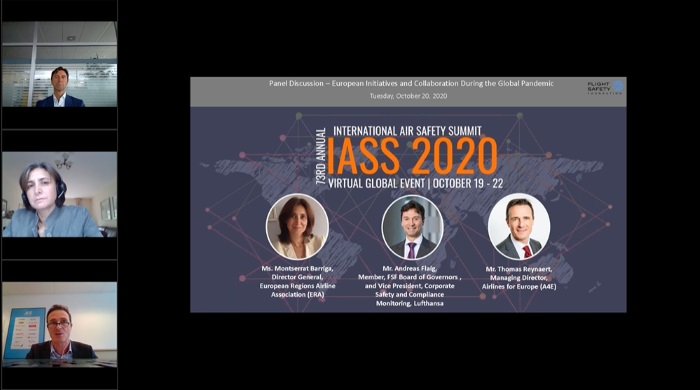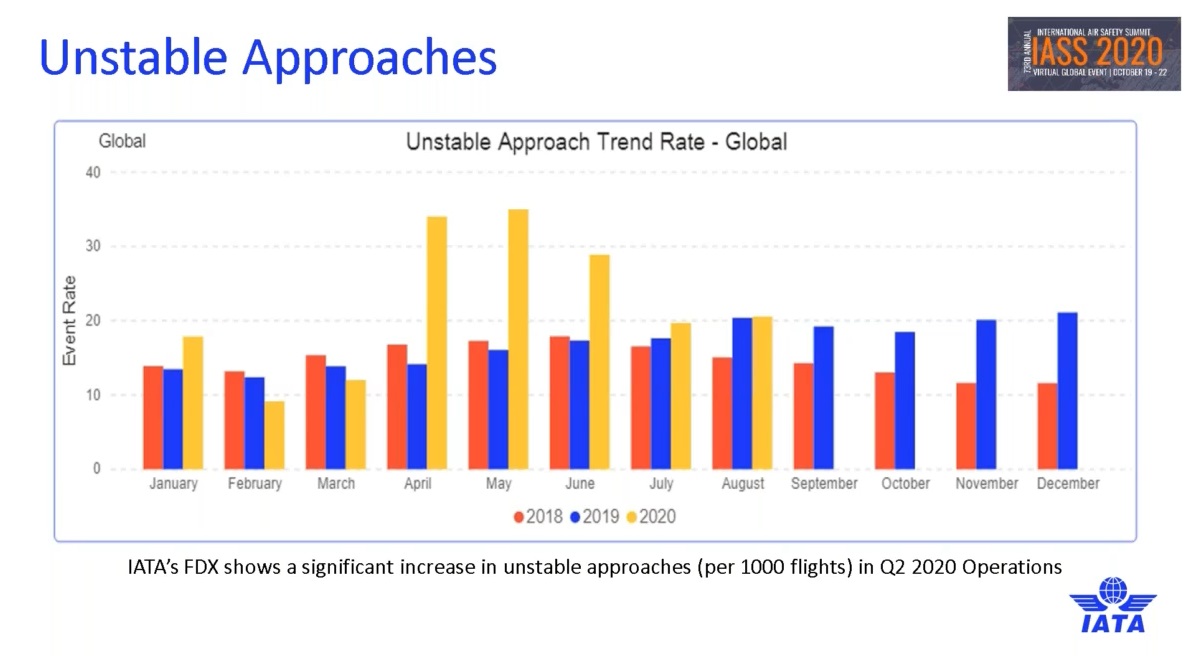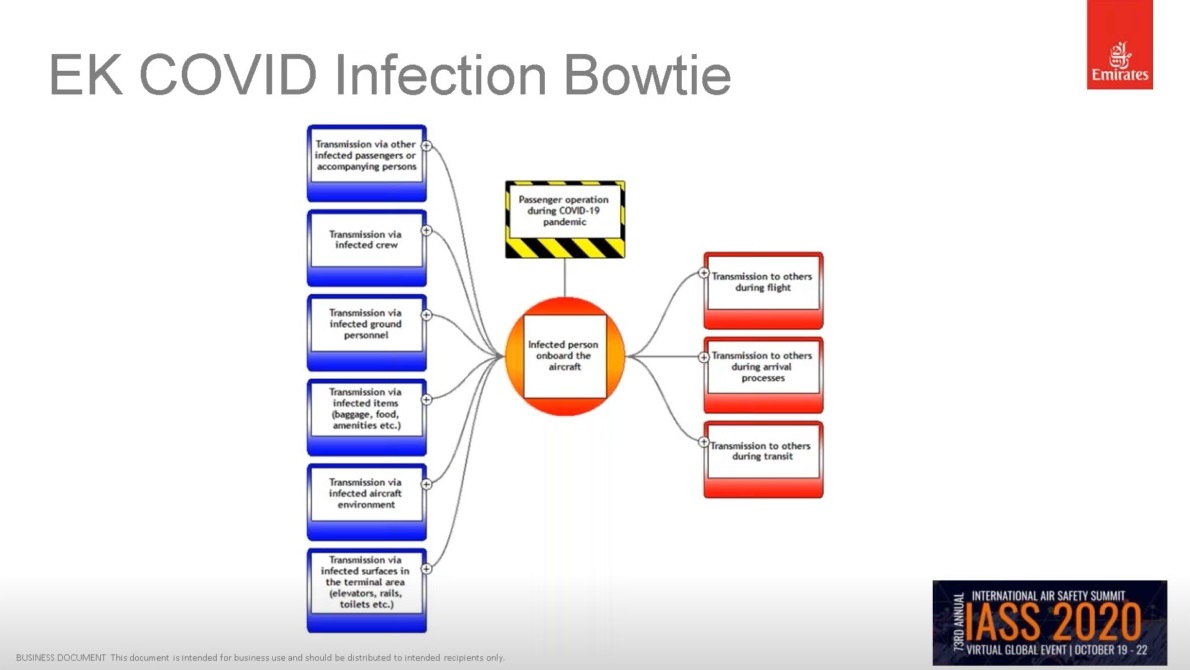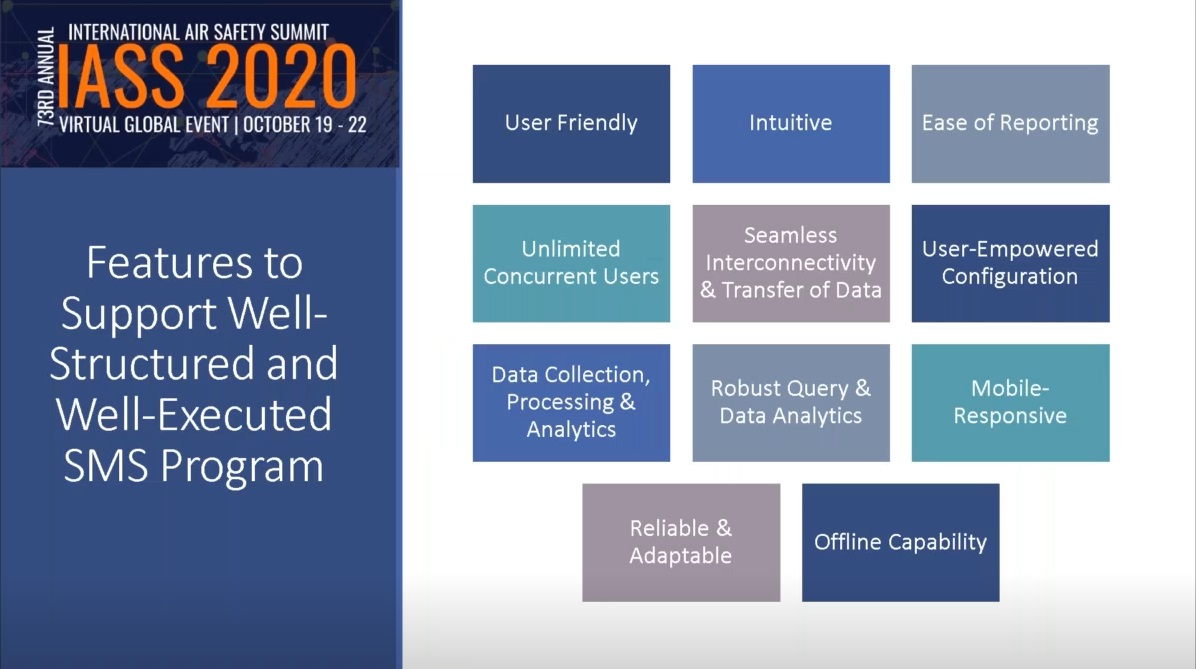20 October 2020 – Second day of IASS 2020 brought some of the interesting topics such as European current status in aviation, uncoordinated approach by governments and how Safety Management System is pivotal in combating COVID-19.
The second day was opened by the keynote address by Eamonn Brennan, EUROCONTROL Director General, who said that in Europe, it’s not the airlines and it’s not the airports that are stopping people from traveling, but rather the quarantine rules. He stated that additional problem is that quarantine requirements vary from country to country and can change quickly.
Last week, the European Council adopted a recommendation on a coordinated approach to measures that affect free movement in Europe. Brennan described the approach as a good first step, but he noted that other stakeholders, including airport and airline organizations, were not happy with it.
Panel Discussion – European Initiatives and Collaboration During a Global Pandemic
Ms. Montserrat Barriga, Director General at ERA, gave a review of European aviation state in the affect of COVID-19 pandemic noting “the year of COVID is for us an inflation point for airlines”. She said that Europe is in a very complex environment – high political tension, independent approach by state members in defining measures, Brexit situation, other industries lobbying very hard to stern the attention to themselves to get the chunk of help funds. Ms Barriga concluded that Europe is seeing a slow and long recovery ahead of us.
Continuing to Ms Barriga, Mr Thomas Reynaert who is a Managing Director at ‘Airlines 4 Europe’ repeated that the biggest and foremost challenge is actually political and social issue to how to restore the passenger confidence to take air travel. He pointed out the main cause is uncoordinated approach by governments in defining measures.

Panel discussion – European initiatives and collaboration during a global pandemic
Session 3 – The COVID-19 Pandemic – Industry Lessons Learned
Ms Nancy Rockbrune, IATA Safety Management, opened the session about COVID-19 effects in aviation. First safety risk was bringing back the aircraft into service after a prolonged time grounded on the ground due to the pandemic and shifting passenger cabin to cargo cabin. Another safety risk was pilot training and licensing and crew fatigue as pilots had to perform flights they don’t usually do. Nancy outlined further safety risk in an increase of unstable approaches in Q2 when aviation restarted. High air speed and low engine thrust were two most common contributing factors.

Increase in unstable approaches in Q2
Next on stage was Ms Prisca Nkolo, Airport Operational Safety and Data Management, Airports Council International (ACI) who gave an insight how airports are handling COVID-19 pandemic. Obvious impacts on airport are reduce in air traffic, reduce in revenue and impact on operations (social distancing, restricted access to the airport, thermal screening, sanitation requirements, extended delays, staff working from home etc.). In regards to safety, Ms Nkolo highlighted an increase in aircraft long-term parking producing a risk of collision during parking maneuvers, increase in wildlife activities, increase workload for staff on duty, unsafe behavior and lack of training. ACI initiated the international collaboration in response to COVID-19 and founded a team of experts to help airports around the world as effective coordination was pivotal. Airports produced many innovative solutions that Ms Nkolo praised such as touchless checkin and boarding, thermal screening, disinfection robots, UV light for baggage disinfection etc.
After Ms Nkolo, there was an overview at COVID-19 from the operator viewpoint as Mr Gareth Lloyd Evans, Manager of Flight Operations Risk, Emirates Airline took the stage. Mr Lloyd Evans defined the change in COVID-19 management as “complex risk” and the need of visualizing the risk using Bow-Tie diagrams. As they began to define the threats for an event of an infected person on board their aircraft, they managed to visualize what barriers of defenses they need and how to audit the data once they identify all barriers and their escalation factors. Mr Lloyd Evans also showed a Bow-Tie diagram with safety impact of COVID-19 and highlighted the lack of competency check for flight crew, unavailability of recurrent training and incomplete internal surveillance (drop in reporting, remote audits instead of on-site). Emirates integrated COVID-19 risk management into their Safety Management System. They also established Covid Safety Action Group that report with the safety board of each department on a weekly basis.

Simplified Bow-Tie for COVID Infection presented by Mr Lloyd Evans
Session 4 – Safety Management
In the final session of the day, Mr Paul Morell, Director of Business Development, opened the topic of SMS (Safety Management System) mentioning that “SMS program continuous improvement will lead to more robust SMS”. The optimization of SMS should consist of utilizing COVID-19 resources, improving root cause analysis and improving SMS platform software. Mr Morell also pointed out that any SMS platform or a software should be user-friendly, intuitive and robust. The organizations should invest in well-structured platforms to give them the benefit of improving their SMS.

Next presentation was about “Safety Culture Assessment in Aviation Maintenance” where Mr Bill Johnson and Mrs Kylie Key, both from the area Human Factors. Mrs Key showed how “organizational influences (communication, training, supervision, work overload, bullying) impact on employee outcome (satisfaction, morale, fatigue, well-being) that at the end impact organizational outcomes such as compliance, performance, errors and willingness to report”.
Finally, Mr Peter Simpson, Global Head of Safety and Security, Standard Chartered Bank, concluded the session with his presentation “The Safety Record of Low-Cost Carriers (LCC) Compared to Full-Service Airlines (FSC), and How It Might Differ Around the World”.
The safety image of the low-cost carriers is not the same as full-service airlines even though they are no evidence to support that. He demonstrated with the statistical results of aviation industry data sets that collects all incidents and accidents around the world. Interestingly, there were no significant differences in accident rates per million departures between the LCC and FSC at a global level. Furthermore, the safety performance of LCC was significantly better than FSC in Africa and North America.







